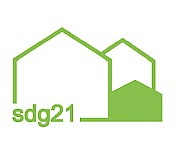The construction of new solar power plants in Lower Saxony continues to grow strongly. In 2018, an increase of more than 72 percent was recorded compared to 2017. While the addition of new capacity in 2017 was 120 MW, around 208 megawatts were newly installed in 2018. This means that Lower Saxony currently has just under 4,000 MW of installed solar power capacity, according to the Climate Protection and Energy Agency of Lower Saxony (KEAN).
The very positive expansion figures of the last two years show that Lower Saxony has recognised the opportunities offered by solar power and has started to catch up with the southern German states. In addition to the nationwide pioneering role in wind energy with a good 11,000 MW of installed capacity, solar power has the potential to become another important source in the generation of electricity from renewable energies in Lower Saxony.
"Solar power is the ideal complement to wind power, as these two renewable energy sources peak at different times during the year," Lothar Nolte, Managing Director of the Climate Protection and Energy Agency of Lower Saxony, explains the effect. "While wind turbines turn fastest in autumn and winter, solar panels offer the greatest yield from spring to late summer."
Solar consultations also at an all-time high
The expansion figures are all the more remarkable because there are hardly any large-scale ground-mounted systems in Lower Saxony, and almost all systems are installed on private and commercial roofs. The interest in the use of solar power is also reflected in the increasing demand for solar consultations. Last year, more than 2,200 homeowners took advantage of "solar checks". The checks are offered jointly by KEAN, the Lower Saxony Consumer Advice Centre and regional partners. In addition, 124 companies received advice on the possibilities of solar energy generation and use.
There are many reasons for the growing interest in solar power: on the one hand, module prices have fallen significantly over the years, so that a kilowatt hour can be generated on a single-family home for around 10-12 cents. This makes self-consumption of electricity interesting, as the purchased electricity averages around 30 cents per kWh. On larger roof areas, such as on agricultural or commercial buildings, generation is even cheaper. Here, too, self-consumption is clearly more important than feeding electricity into the grid. "The desire for as much self-generation as possible, which creates at least a certain degree of independence, is another important motivation for building owners," explains Lothar Nolte.
The regional analysis shows that the expansion is developing well, especially in rural areas. The Emsland district is at the top of the list with 22 MW in 2018. If one relates the expansion to the number of inhabitants, the districts of Vechta and Nienburg come out on top. In urban areas, the expansion of solar power plants is significantly lower. In the view of the Climate Protection and Energy Agency of Lower Saxony, the reason lies in the far too complicated regulations for tenant electricity. "Many roof areas would be perfectly suitable, but the use of the electricity for tenants is made difficult with a bureaucratic bulwark," says Lothar Nolte. "There should be a consistent simplification here.
Further information on the Solar Check consultation offer for homeowners
Further information on the counselling service Impulse consulting for SMEs - Solar for companies
3.4.2019 | Source: Klimaschutz und Energieagentur Niedersachsen GmbH
Keywords:
DE-News, Renewable, News Blog Lower Saxony, PV


